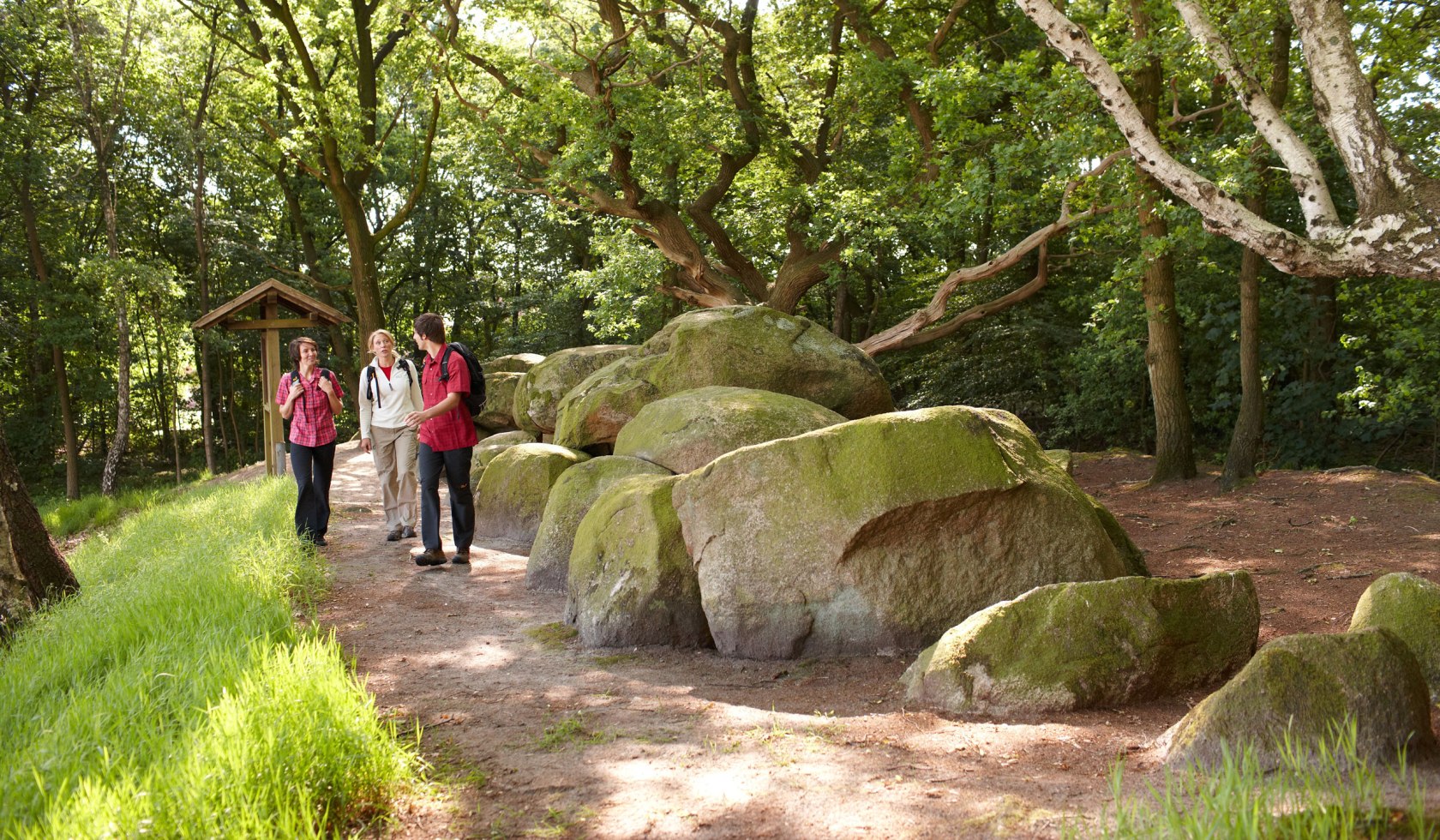Rolling hills, extensive forests, valuable cultural heritage - the Hümmling Nature Park in Emsland has all this, embedded in the North German plain, criss-crossed by small waterways and interspersed with evidence of the megalithic culture during the Neolithic and Bronze Ages. The landscape showcases the idyllic countryside with its beech forests and birch groves, the magnificent colours of flowering fields, its contrasting moor and peatlands, the delicate lilac-coloured heathlands.
The park gets its cultural importance through the many treasures from various periods: The especially numerous prehistoric megalithic tombs point to an early settlement of the area. The cycle route passes erratic boulders and imposing burial sites of the megalithic culture. Standing as stony witnesses, the monuments "tell" of a time more than 5,500 years ago. That they can be found today in the shade of gnarled rustic trees makes their experience even more mythical.
The society of trees, or better: of the forest and its inhabitants was already appreciated by the Prince Elector Clemens August: He chose the Hümmling for his hunting grounds and with his hunting star, Clemenswerth, he gave the region a Baroque jewel of national appeal - today's Clemenswerth Castle in Sögel.
As one of the landmarks of the Emsland route, the Hüvener Mill has fascinated visitors for centuries, because it is one of the last preserved wind and water mills in Europe; in its shadow, cyclists rest under mighty trees on the banks of the Mittelradde. Fully recovered, they head for many more destinations: for example, the traditional Theikenmeer Nature Reserve and the biblical garden in Werlte or Surwolds Forest with a climbing park and fairy tale show. Very different aspects, however, are experienced on the Hümmlinger pilgrimage route and in the Esterwegen Memorial (European memorial site for the 15 Emsland camps).





